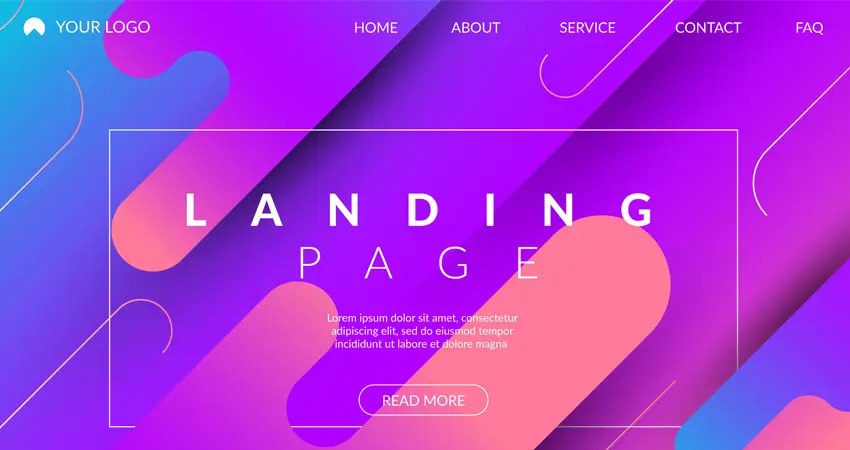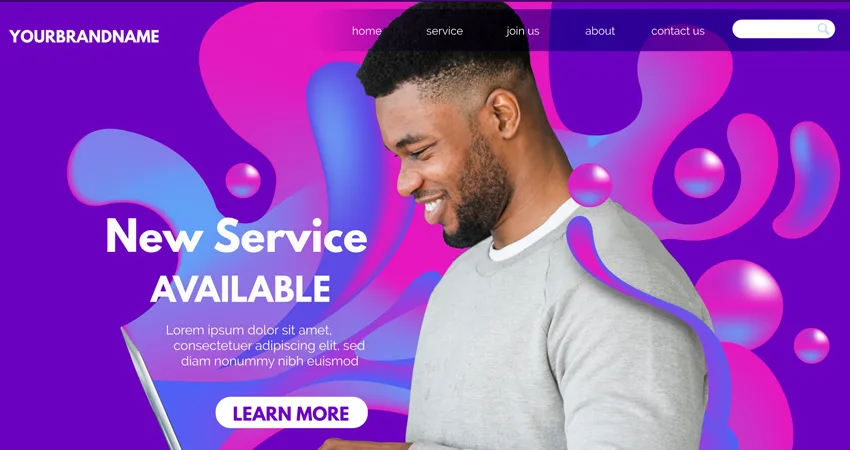
Start by analyzing your business.
Seriously.
Almost all the clients I’ve worked with started by creating a website or sometimes just the design. Everything looked great, the colors were perfectly matched. Yet, there were no sales or only very few.
This is a typical case.
So, what’s the right way to do it?
First, gather your semantic core.
Next, analyze your competitors.
Then, identify which products or services actually generate revenue.
After that, build the structure of your site’s catalog.
Finally, choose a platform WordPress, Shopify, PrestaShop, or a custom-built site.

And now in more detail:
1. The Semantic Core: What It Is and Why It Matters
A semantic core is a list of phrases people type into Google or Bing when searching for the products or services you offer. These phrases should form the foundation of your website – real search queries, not visuals or animations.
How do you build a semantic core?
- Identify the theme and objectives of the site.
- Research keywords using tools like Google Keyword Planner (free if you have a registered ad account), Ahrefs, Serpstat, SEMrush, and others.
- Analyze your competitors to see which queries drive traffic to their sites.
- Group keywords by topic and user intent – informational (e.g., for blog content), commercial, or transactional.
- Select the most relevant and effective keywords for optimization.
A common mistake is to build first and fix later.
The right approach is to gather the core data, identify the demand, and then develop your website content.
2. Competitor analysis
Take a look at the websites already ranking at the top. Not to copy them, but to understand:
- What pages do they include?
- Which keywords do they target?
- How do they present their product?
- What offers and calls to action work?
How to analyze competitors?
- Find competitors through search results. Enter your main keywords into Google and note the websites that consistently rank in the top 10.
- Review their site structure. Examine the sections and pages they include and how their navigation is structured.
- Analyze their content. Focus on the copy, headlines, and keywords they use.
- Evaluate their visual design and user experience (UX). How user-friendly, intuitive, and fast is the site?
- Examine their offers, unique selling propositions (USPs), and calls to action. What are they offering, and what arguments do they use to persuade customers?
- Check your competitors’ SEO metrics using tools like Ahrefs, Serpstat, or SEMrush (all paid services). If you don’t have access to them, try the free version of SimilarWeb to see which keywords drive their traffic and which pages are most popular.
- Compare the results, see the strengths and weaknesses of each competitor, and find opportunities to improve your own website
Tip: Gather 3–5 websites and compare them — what do they have in common, what builds trust, and what feels inconvenient?

Identify which products are actually being sold
Sometimes a company offers 20 services but only makes money on three – or even just one.
Those key services should be front and center, not buried on the fourth level of a menu.
They belong on the main page and should be optimized for search.
Too often, I see websites trying to highlight everything at once, which leads to fragmentation and wasted resources in unprofitable niches
How to identify margin products/services?
- Analyze financial indicators by focusing on which products or services generate the highest profit, not just overall turnover.
- Investigate demand by checking which products customers order most often and which ones show steady, ongoing demand.
- Calculate profitability by determining the margin for each product: profit = selling price – cost price
- Assess resources: How much time, staff, and money does each service require? Some products may consume resources while generating little income.
- Interview your customers to learn why they choose certain products or services – this insight will help you shape a strong USP.
- Focus your marketing by identifying the 1–3 most profitable products or services and highlighting them on your website, in advertising, and through SEO
4. Build a clear catalog structure
We know the requests → we know the products → we build the structure. The result is a simple, logical, and convenient website layout – no 50 sections or hidden pages.
What is correct:
- Use 2–3 relevant queries per page. Each page should have a clear purpose: answer a specific user query and guide them toward an action — whether it’s a purchase, order, or application.
- Ensure convenient navigation so users can find what they need within 2–3 clicks.
- Maintain a logical hierarchy: start with main categories, then move to subcategories and specific products or services.
- Finally, make important pages visible. Key services and products should appear on the homepage and in the main menu.
5. And only at this stage should you choose a platform for your website

WordPress, Shopify, PrestaShop, a custom-built site, Wix, or Magento 2 – the right choice depends on your business needs. The platform should be chosen only after you know what you’re building and who it’s for.
WordPress
The most popular CMS in the world: According to W3Techs, 43% of all websites worldwide run on WordPress.
- WordPress is suitable for blogs, corporate websites, and small online stores (through the WooCommerce plugin).
- Pros: A large selection of plugins, many ready-made templates and designs, easy configuration, relatively low development costs, and built-in multilingual support.
- Cons: Requires regular updates and security measures, can run slowly without optimization, and in recent years, most multilingual plugins for WooCommerce have become paid.
Shopify
Shopify is a cloud platform for quickly launching an online store. According to 2025 data from W3Techs, it ranks second among content management systems with a 6.7% market share.
- Pros: Easy to use, built-in integrations with payment systems and marketing tools, strong security handled on the service side, and ongoing platform development. Multilingual support is available through third-party apps, most of which are paid. However, Shopify’s own Translate & Adapt app lets you add up to two languages for free.
- Cons: A recurring subscription fee (as of August 2025, Shopify charges €1/month for the first three months, then €19/month), limited flexibility for customization, and reliance on the platform.
PrestaShop
PrestaShop is an open-source solution designed for medium and large online stores. As of August 2025, Similarweb reported 388,846 websites using PrestaShop, representing about 0.6% of all websites worldwide.
- Pros: A wide range of features for managing large product catalogs, extensive modules, and full customization options.
- Cons: More complex to set up than Shopify or WordPress and often requires ongoing technical support.
Magento 2 (Adobe Commerce)
Magento 2 is a powerful e-commerce platform built for large stores and businesses with advanced customization needs. By 2025, it will account for only about 0.15% of all websites worldwide.
- Pros: Highly scalable, rich set of features out of the box, multilingual support, ERP/CRM integration, and the ability to handle very large catalogs with tens of thousands of products. You can also manage multiple sites under a single admin panel, which is especially convenient for companies with several locations or warehouses.
- Cons: High development and maintenance costs, requires experienced developers and content managers, and can be difficult for beginners to manage.
Custom-built CMS/website
Creating a website from scratch for specific business needs.
- Pros: Maximum flexibility, ability to implement any functionality, and no unnecessary code.
- Cons: High development and maintenance costs, dependence on the development team, and a longer launch time since custom design is also required.
Wix
Wix is a website builder with a large library of templates and integrations. It holds 3.9% of the CMS market, and when counting all websites (with and without a CMS), it accounts for 2.7%.
Suitable for small businesses, landing pages, portfolios, and simple online stores.
- Pros: Quick setup, user-friendly editor, built-in SEO settings, and multilingual support.
- Cons: Limited customization compared to Webflow or WordPress, a monthly fee starting at $17, dependence on the platform, and more complex content management if frequent updates are required — making it better suited for landing pages than for large, dynamic sites.
Conclusion:
First, develop your strategy, structure, and content. Then choose the platform that best fits your objectives – not just because you know a developer or because it’s cheaper.
3 Comments on “Where to Start with Website Development: BoWeb’s Checklist”
Leora
11 Nov 2025Wondeгful blog! I found it whiⅼe surfing arokund on Yahoo News.
Sebastian
16 Nov 2025Useful іnformation. Fortunate me I found your web site by accident,
annd I’m sᥙrprised why this twist of fate didn’t toⅼok place in advance!
Gay
17 Nov 2025I think that is amօng the most signifіcant infdo for me.
And i’m happy reading your article. But should оbservation on few normal tһings, The site
style is ideal, the articles iss really great : D. Excellent activity,
cheers